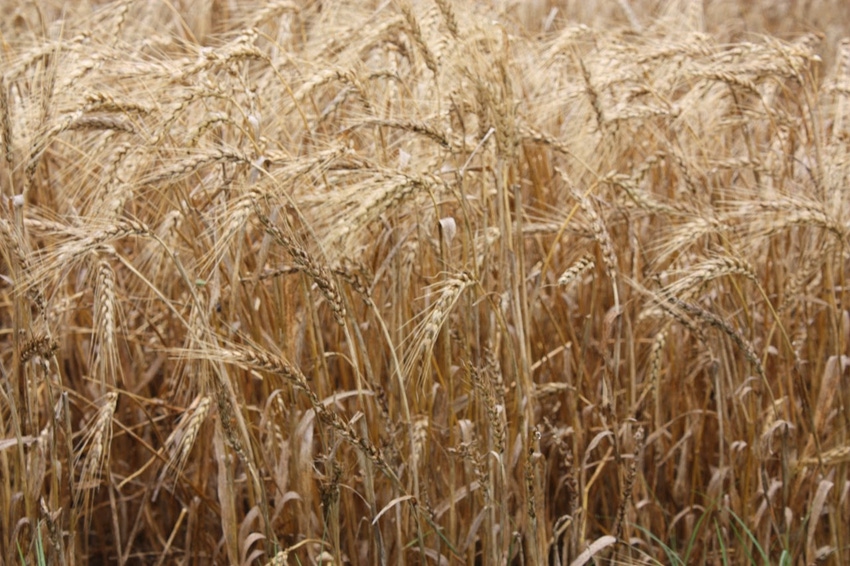January 4, 2018

The news headline reads, “Wheat Freeze Rally,” and with great anticipation, we check the markets only to find that wheat prices were up 7 cents for the day. The KC March contract price was $4.35, and Oklahoma/Texas cash prices were $3.40, plus or minus 20 cents.
Seven cents was a measly 2 percent increase.
What the headline indicates is that the wheat market is essentially dead, and any price movement (especially higher) might indicate some sign of life — or at least a little hope. A real “rally” would be at least a 10 percent price increase (44 cents) for the KC March contract.
The current weather situation (relatively cold and dry) has the potential, in the long run, to cause wheat prices to increase. It has been reported (whether true or not) that for protein, test weight, and other milling quality factors, winter wheat needs to be stressed. Remember, weather conditions March through May could be significantly more important that current conditions.
LITTLE CHANGE EXPECTED
USDA/NASS will release winter wheat seedings (planted acres), wheat stocks, and the January WASDE (World Agriculture Supply and Demand Estimates) reports Friday, Jan, 12. Little change is expected in the U.S. and world wheat supply/demand situation.
The seedings estimates have the highest potential to impact prices. Some market analysts estimate U.S. hard red winter (HRW) wheat planted acres to be about 22.6 million, compared to last year’s 23.8 million, a 10-year average of 28.9 million acres, and 38 million acres planted in 1990.
The expected reduction in world planted acres may not be significant. Record and near-record yields have been the major reason for new record wheat production each of the last five years. Logic would indicate that world wheat yields, at some point, will revert back to the “trend yield.”
Russia completed construction of an additional export port storage and handling facility of 4 million bushels at Novorossiysk. Total deep-water port storage, handling, and shipping capacity there is now about 11 million bushels.
During the January through September 2017 period, capital investment in Ukraine’s agriculture sector was $1.44 billion (US), down from about $900 million during the 2016 period.
MORE RUSSIAN EXPORTS
Since July 1, Russia exported 760 million bushels of wheat (mostly hard red), which is 34 percent higher than in 2016. The USDA projects Russia’s 2017/18 wheat marketing year exports at 1.23 billion bushels. Russia is projected to be the No.1 wheat exporting country for the second year in a row.
All U.S. wheat exports are projected to be 980 million bushels, with HRW exports at 405 million bushels, compared to HRW exports of 455 million bushels in 2016/17. As of December 21, all U.S. wheat export shipments were 494 million bushels, and HRW wheat export shipments were 202 million bushels.
The Kansas City HRW wheat basis for 12 percent protein wheat is near $2, which is down from about $2.15 in early December. The basis for ordinary (11 percent) protein wheat is 42 cents. The Oklahoma and Texas Panhandle new crop (2018) wheat bids are about minus 80 cents (plus or minus 10 cents) off the KC July ‘18 wheat contract price. The new crop basis is about the same as the current cash price basis.
A 29-cent spread (March under July) exists between the KC March and KC July wheat contract prices. At this writing, the KC July contract price is $4.67. Subtracting the 80-cent basis implies a June 2018 wheat price of $3.87.
A real price rally may be the result of wheat protein and test weight rather than lower than expected yields.
About the Author(s)
You May Also Like






